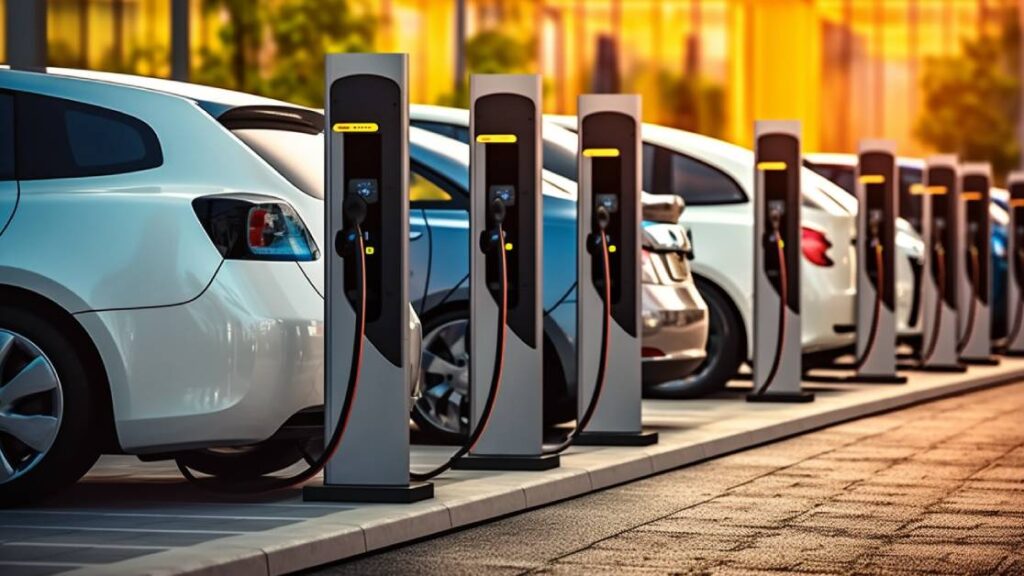
As electric vehicles (EVs) continue to transform South America’s energy sector, there is continued development of new technologies. Traditionally, electric vehicles have used renewable energy to power the cars. This helps to reduce reliance on fossil fuels and reduce the emissions of greenhouse gases. Electric vehicles thus contribute to sustainability, decarbonization, and energy independence. While the adoption of electric vehicles is slow and steady, there are other ways to speed up the adoption process. This is by converting gas-fueled cars into electric vehicles, which is cheaper than buying a new EV. Other methods include the use of ethanol-based internal combustion engines (ICEs). Also, high-quality formed wires serve in the production of batteries used for energy storage. This makes it a crucial component in the development of electric vehicle infrastructure.
Formed wires help in transmitting power, signals, and data throughout the vehicle’s systems. They ensure that various electrical components function properly. They also function in charging systems and energy management solutions. Availability of market potential, government policies, and the region’s growing commitment to sustainability attract foreign investments in South America. The dominance of hydropower in Brazil, Uruguay, and Paraguay promotes electric vehicle markets. Other companies concentrate on using ethanol-energy-based internal combustion engines for the EV market. Dive in as we analyze how biofuels support the electric vehicle industry and the role of formed wire in the infrastructure.
Contribution of formed wires in electric vehicle infrastructure
The role of formed wire extends beyond the vehicle itself and into the broader EV infrastructure. They function in charging systems and grid integration to ensure sustainability. Formed wire aids in power distribution, data communication, safety, and thermal management. In the continued innovation in technology, formed wires will help ensure reliable, efficient, and safe energy transfer. Using durable and adaptable-formed wires will enhance the future of electric mobility. The following are the functions of formed wires in electric vehicle infrastructure.

- Power distribution within EVs – formed wires connect the battery pack to the motor and other components. These components include inverters, converters, and charging ports. The wires must be able to handle high voltages and currents to send power efficiently. Formed wires also serve in low-voltage applications. This includes connecting control modules, sensors, and lighting.
- Battery management systems (BMS) – the battery management system ensures the battery operates safely. Formed wires connect the BMS to individual battery cells, temperature sensors, and voltage monitors. These connections allow the management of charging, discharging, and thermal regulation.
- Charging infrastructure and connectors – the charging cables use formed wires to connect EVs to charging stations. This allows the transmission of electricity from the grid to the vehicle’s battery. Specialized formed wires and cables handle the transmission of electrical energy.
- Thermal management systems – EVs use thermal management systems to regulate the temperature of the battery. Formed wires connect the temperature sensors, pumps, fans, and heating or cooling elements.
- Smart grid and vehicle-to-grid applications – vehicle-to-grid allows electric vehicles to send energy back to the grid during peak demand periods. This helps to stabilize the grid and integrate renewable energy sources. Formed wires enable communication and power transmission in smart charging systems. They systems optimize when and how much an EV charges.
How biofuels support electric vehicles in South America
Biofuels can complement electric vehicle infrastructure in various ways. Despite depending on electricity, EVs can use biofuel to power hybrid and range-extended vehicles. The integration of biofuels with electric vehicles can create a more flexible, sustainable transportation system. Here’s how biofuels support electric vehicles in South America.

- Hybrid and range-extended electric vehicles – these vehicles use a small internal combustion engine to generate electricity when the battery is low. The engine can be powered by biofuels like ethanol, biodiesel, or renewable diesel to reduce reliance on fossil fuels.
- Electricity generation from biofuels – biofuels can help power generators that produce electricity for EV charging stations. Biofuels can reduce the carbon footprint of electricity generation. This is especially in countries that depend on fossil fuels.
- Reducing carbon emissions in battery production and recycling – the production and recycling of EV batteries are energy-intensive processes. Using biofuels in the production facilities can reduce carbon emissions.
- Heavy-duty and commercial vehicles – ethanol-fueled engines could complement electric propulsion for long-haul transportation. Heavy-duty vehicles can be fitted with flexible-fuel engines that use both electricity and biofuels.
- Fuel cells using biofuels – ethanol can be converted into hydrogen through reforming processes. This hydrogen can serve in fuel cells to power electric vehicles.